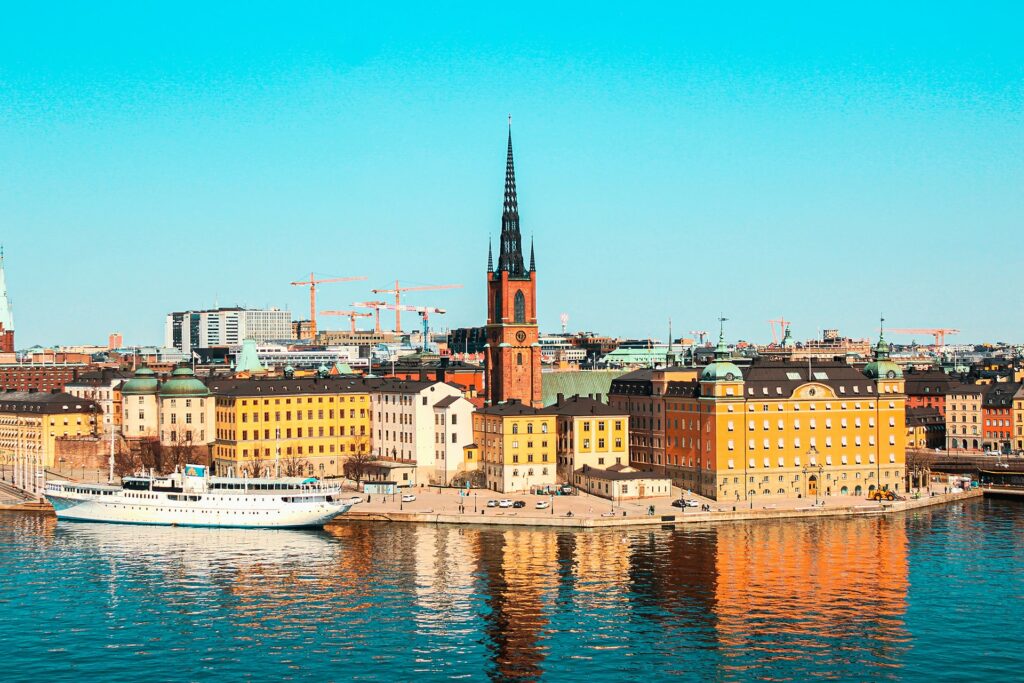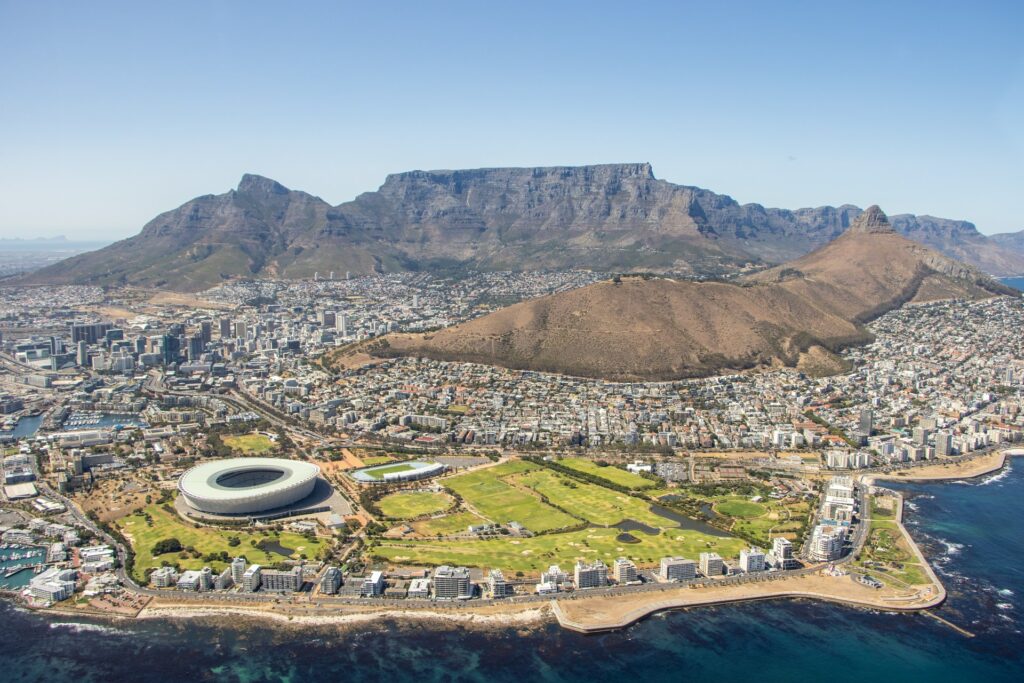We’re launching a new section at .barcelona looking at other cities with their own domain. One of the best known examples is Stockholm, which in just a few years has managed to make .stockholm the domain for all websites linked to the city council in the Swedish capital. A fine example of the use and implementation of a city domain.
We spoke about the .stockholm domain in an interview with Marcelle Abou Haidar Johansson, head of projects at the Department for Communication at Stockholm City Council.
Marcelle, what is your role within the .stockholm organisation?
Before becoming a project manager with the Department for Communication at Stockholm City Council, I worked with the domain register for the .se and .nu domains. Thanks to this prior knowledge, in 2016 I was asked to join the Department for Communication at the City Council to manage the project launch for the TLD .stockholm.
Since then I’ve been working to implement the TLD in network communications, as well as the updating and development of new websites for Stockholm City Council.
The .stockholm user profile is exclusively institutional, although it will gradually be opened up for other private users. What profiles do you think will be the most interested in using the domain?
As we had an “internal launch” with .stockholm only being used for the city’s organisation, we hoped this would give the TLD an identity status of belonging to Stockholm. As a result, I think the domain will be of more interest to businesses and organisations whose identity is strongly linked to the city of Stockholm.
Over these few years we’ve had various enquiries from small and medium-sized businesses in the city who wanted to be able to register a .stockholm domain. Judging by this, we think this will be the profile with the greatest interest in the domain.
What values for the city of Stockholm are the most recognisable for users of the domain?
Since we introduced the new .stockholm websites, the domain represents more advanced and modern technology which is better suited to users and to web accessibility. This comes in addition to a strong link with the city of Stockholm.
Can you explain the most characteristic success story for the .stockholm domain?
Personally, I love the work we’ve done with the main website for the city’s organisation. It’s a multi-site where various smaller sites converge both visually and technically. Each of these sites is for a specific service offered by the city. For instance, a nursery school (förskola in Swedish), a home for the elderly, business services etc. They all have their own .stockholm domain. This really helps with communication about a specific service. To use one of these examples, if we want people to enrol their children at a nursery school we direct them to förskola.stockholm. There we provide all the necessary information on how to enrol, along with everything else relating to that service.
This represents a change compared to the structure for our former website, where all the information was grouped together in the same place with a tree structure. That meant over 3,000 pages in the end, making it pretty difficult to find the information you were looking for. Even direct links were longer. The new format is much more direct and easier to understand.
What’s your go-to city domain and why?
The first two websites we created, förskola.stockholm (pre-school) and äldreomsorg.stockholm (elderly people), served as a way of testing the new structure and are the sites which citizens have been using the longest. Because of this we’re very fond of them, plus the fact they’re the most popular.
That said, my favourites are äldreomsorg.stockholm and motionera.stockholm. Firstly, because I worked personally on the conceptualisation and launch of both sites, but also because the result was a big improvement on the way users accessed the information before. They’re also very pleasing visually and the domains are spot on in what they communicate. This is one of the main reasons I love working at Stockholm City Council with the .stockholm domain.
How did you decide that the .stockholm domain would be exclusively for institutional use?
It started by chance. There are certain laws and regulations that prohibit the City Council from charging for or making any financial gain from a service unless this is decided on by the City Council itself or through one of its companies. As the application period for ownership of the .stockholm domain was shorter than the time it would take to make a decision over it, the team working on the .stockholm domain application at that time decided that it would only be put to institutional use.
Naturally, the plan was to open it up to the general public later. Even so, now that we’re using it this way it seems very natural to us and the best decision for the city of Stockholm.
How did the process go to switch all the council websites from .se to .stockholm?
The heaviest part of the work was to turn Stockholm.se into various smaller websites with .stockholm domains. This process was quite a challenge at many points. The biggest thing was the work prior to the change, considering that each municipal service is decentralised and most of them have their own communication staff and managers. In most cases, our central communications office came up against the fear of informing the rest of the municipal organisations that we wanted to change all the domains of one Sweden’s biggest websites.
Our website consultancy agency also had little knowledge of how to switch to a TLD that had never been used before. This meant they were also very cautious and reticent to start with.
But speaking to other people in the domain names sector, observing the experiences of other cities, regions and brands to see how they worked with their domains, helped us to draft an action plan for change.
The thing that concerned us most was losing traffic from search engines, which roughly accounted for 60% of all the traffic to the former website. In our preliminary research we reached the conclusion that the most important thing was to make sure that all our visitors would continue to find what they were looking for. Each of the pages from the old site were therefore assigned a new page and a new website. As we made an effort to eliminate unnecessary text and clean up the existing content, the result was that at times 10 or even 20 pages were redirected to a single page of the new website. We had 301 redirections from old links!
As we expected, in the first few months we dropped in terms of SEO, but later recovered. We also launched the mini independent websites one by one and linked them all together. The first two sites on pre-school and elderly people thus helped with later websites as they had achieved good positioning.
As a complement to this work, we’re changing other city domains (besides stockholm.se) to the new .stockholm. This work is still ongoing, but is simpler now as we have got past the heavier work at the outset.
Do people identify the .stockholm domain with Stockholm City Council? Do you think that’s a positive change?
I’d like to be able to say yes straight away, but I honestly think there are two types of people: those that take an interest and pay attention to domain names and those who simply want to reach the information they need. The former do look at the URL and identify .stockholm with the City Council. The latter probably haven’t even realised we’ve changed the domain, even if they use it every day. This group is bigger and perhaps the most important reason behind our good positioning in search engines, because without them they might not ever find us.
Generally, we see a very positive change and we’re very happy with the feedback we get from visitors to our websites. All this is thanks to the work we’ve done with the website, working with our identity, brand profile, content, user testing, accessibility, SEO and more.




